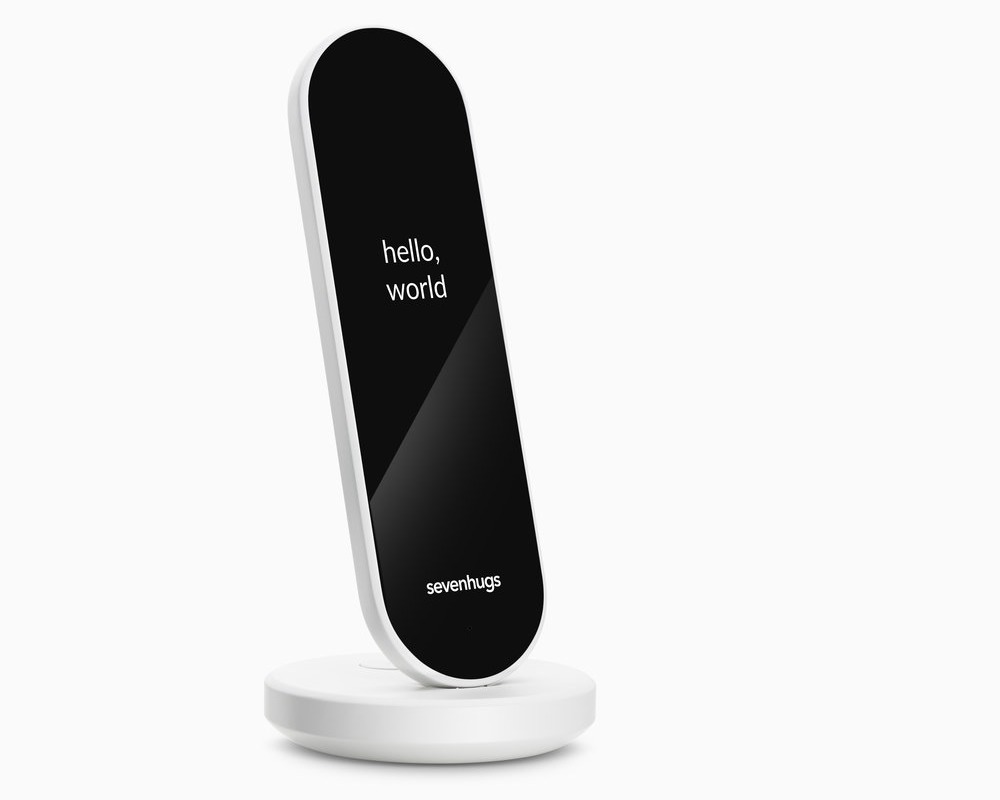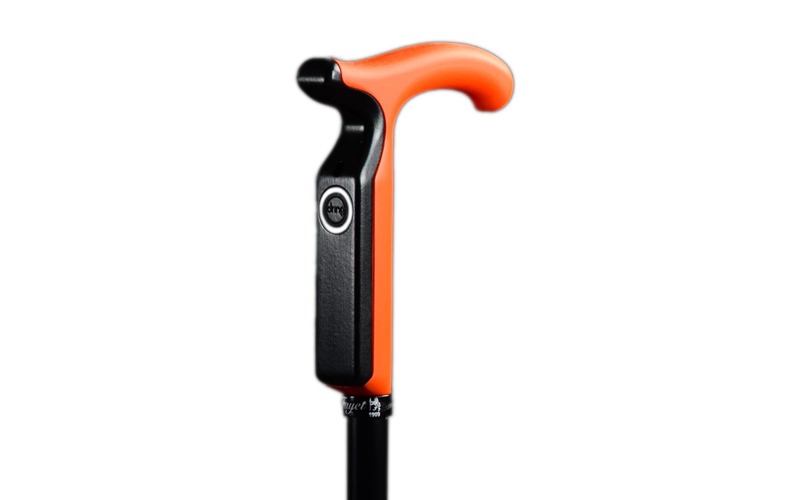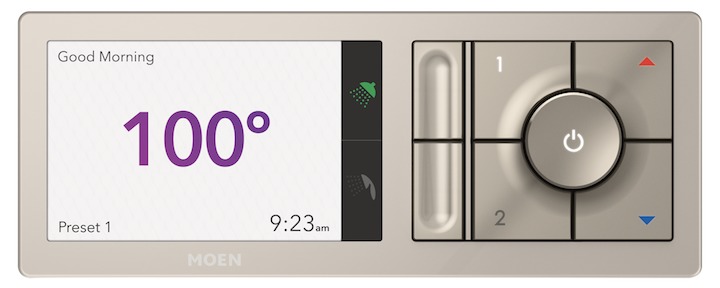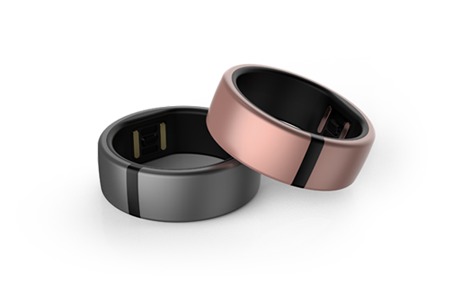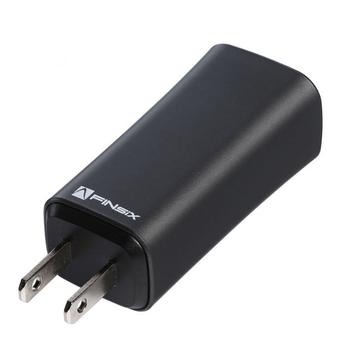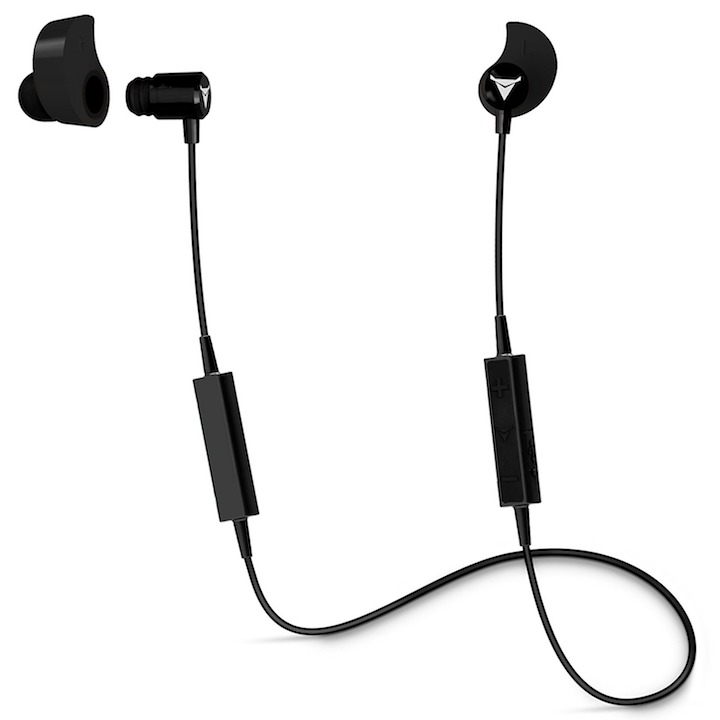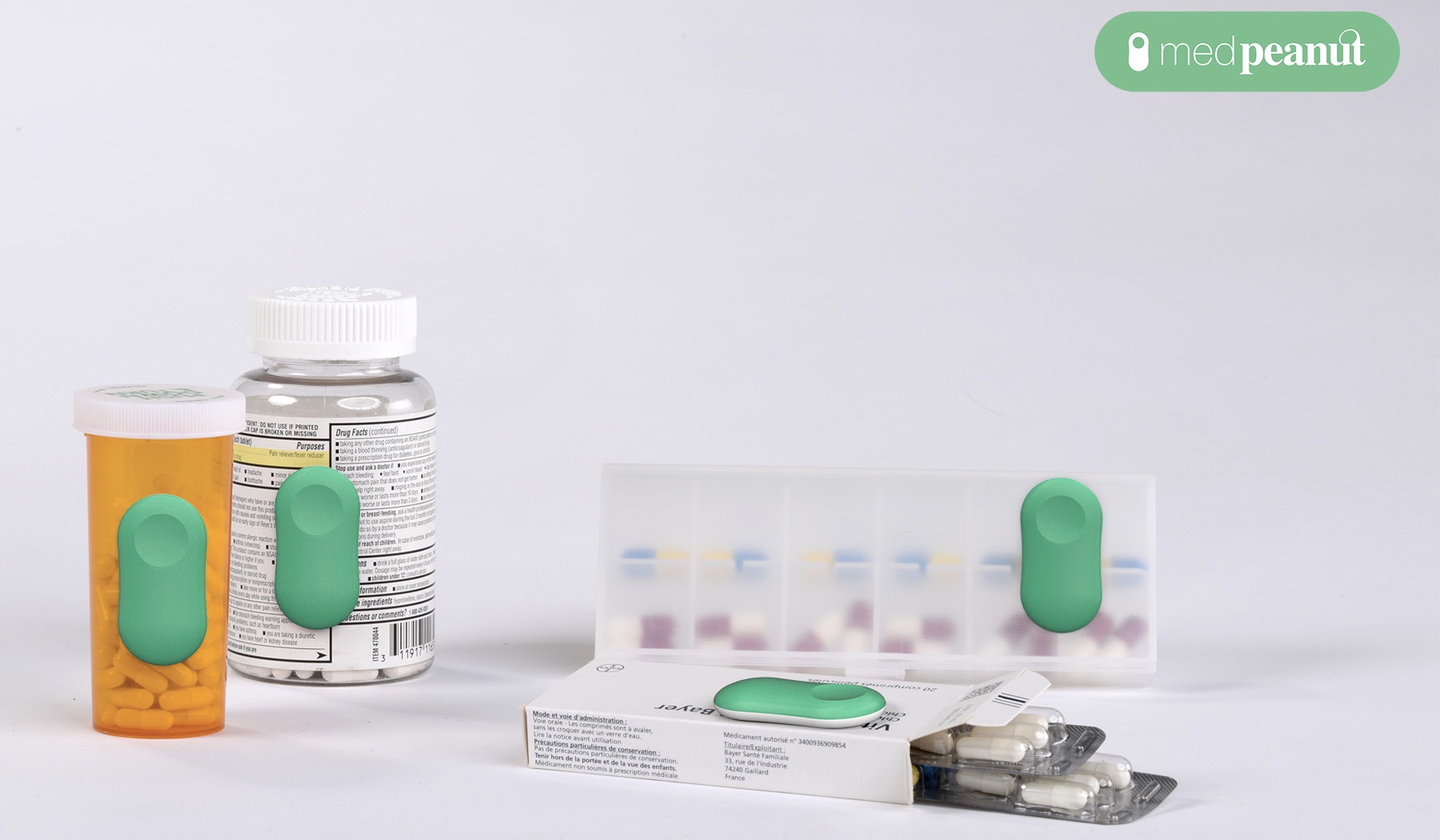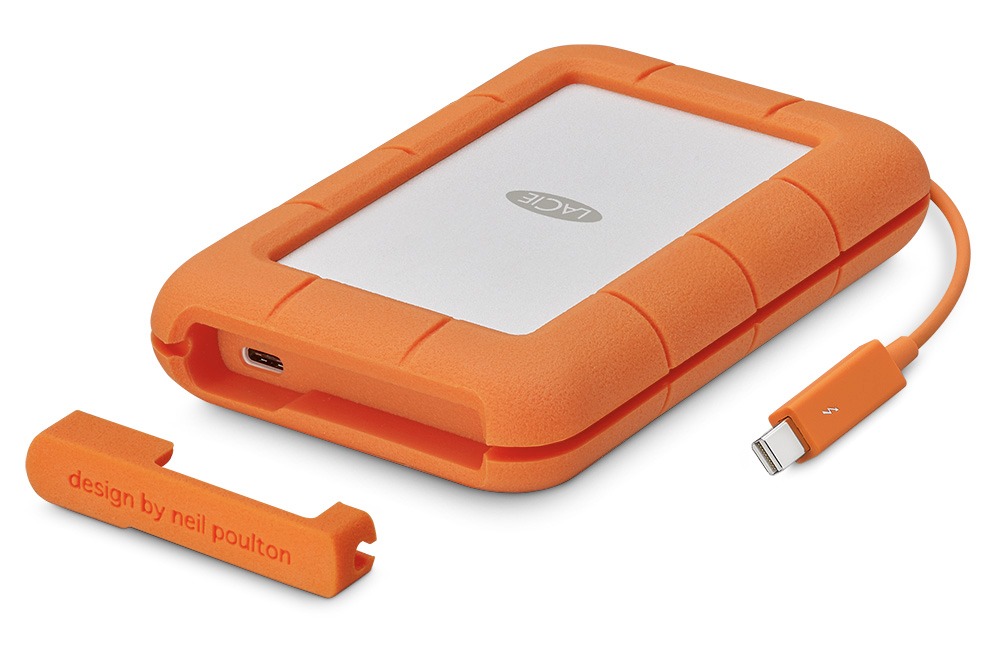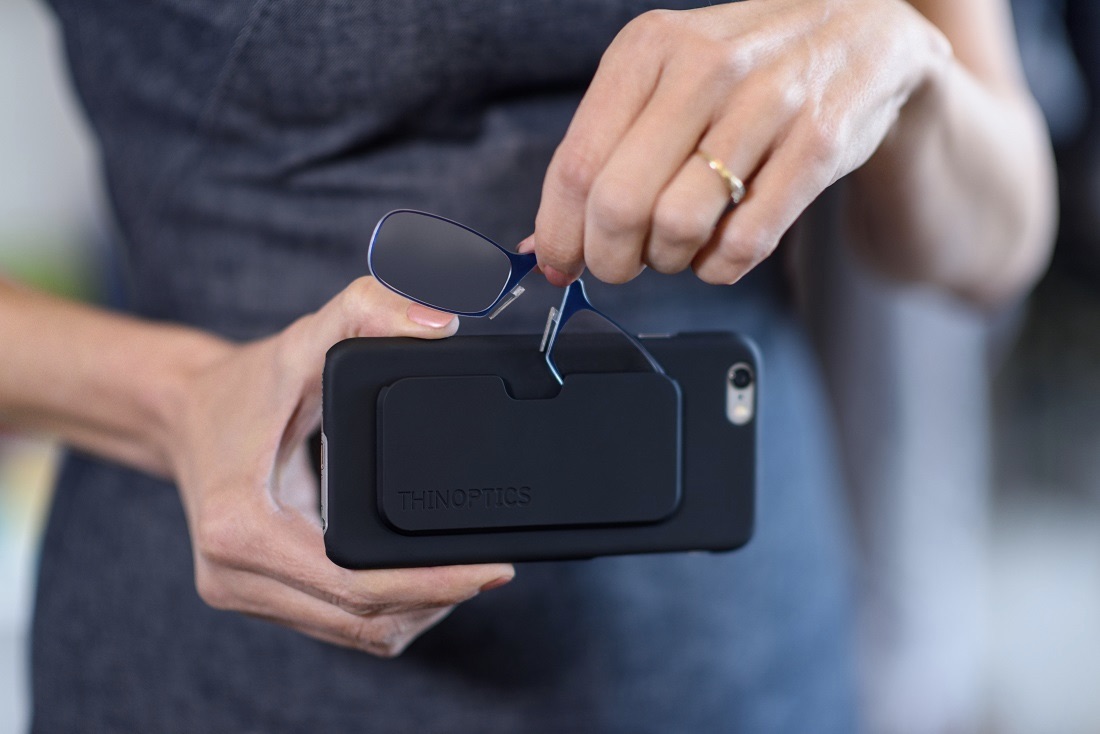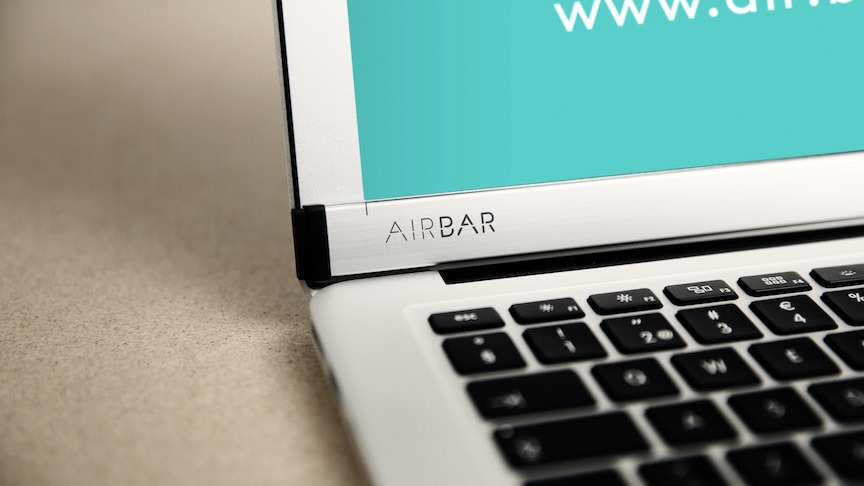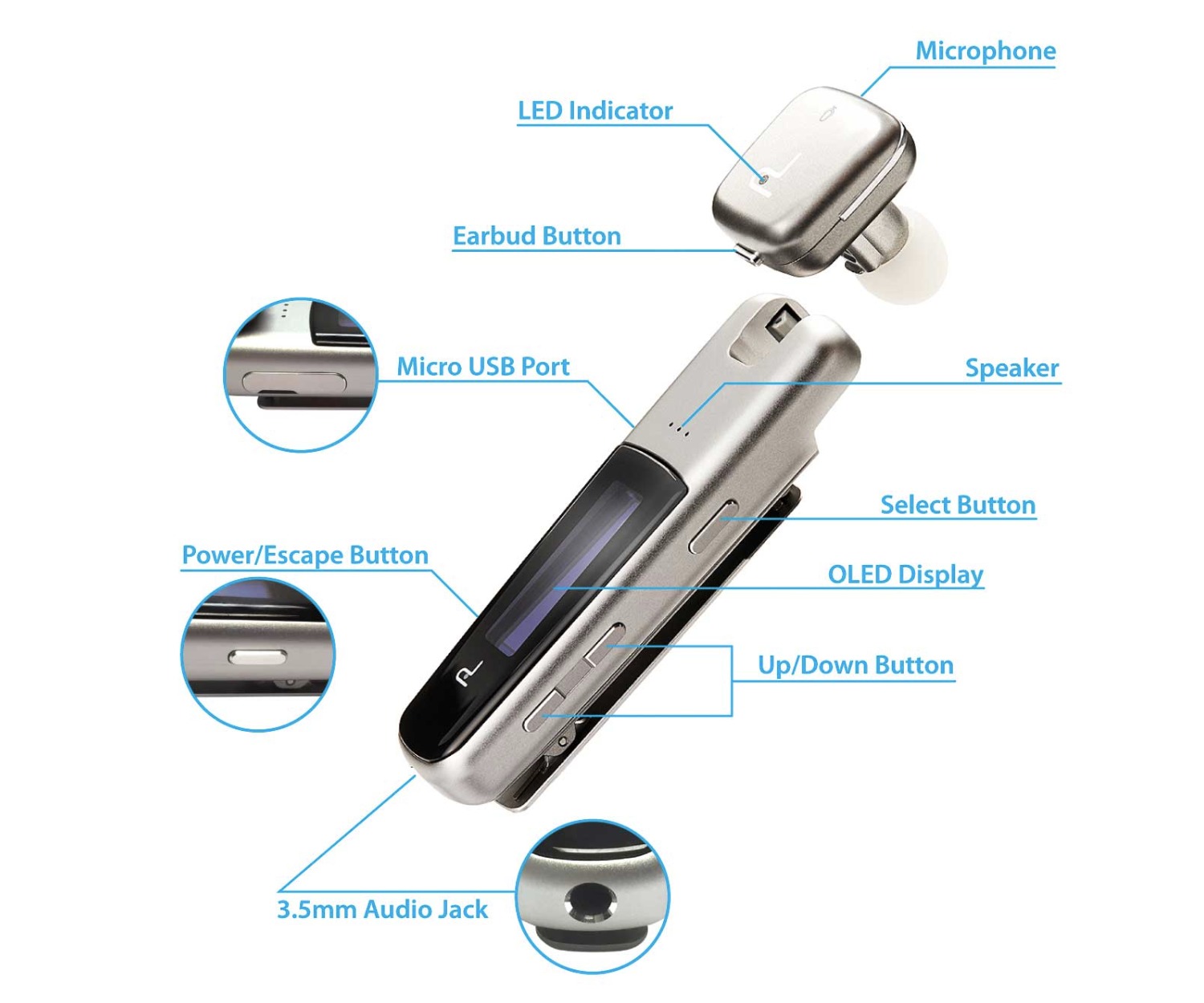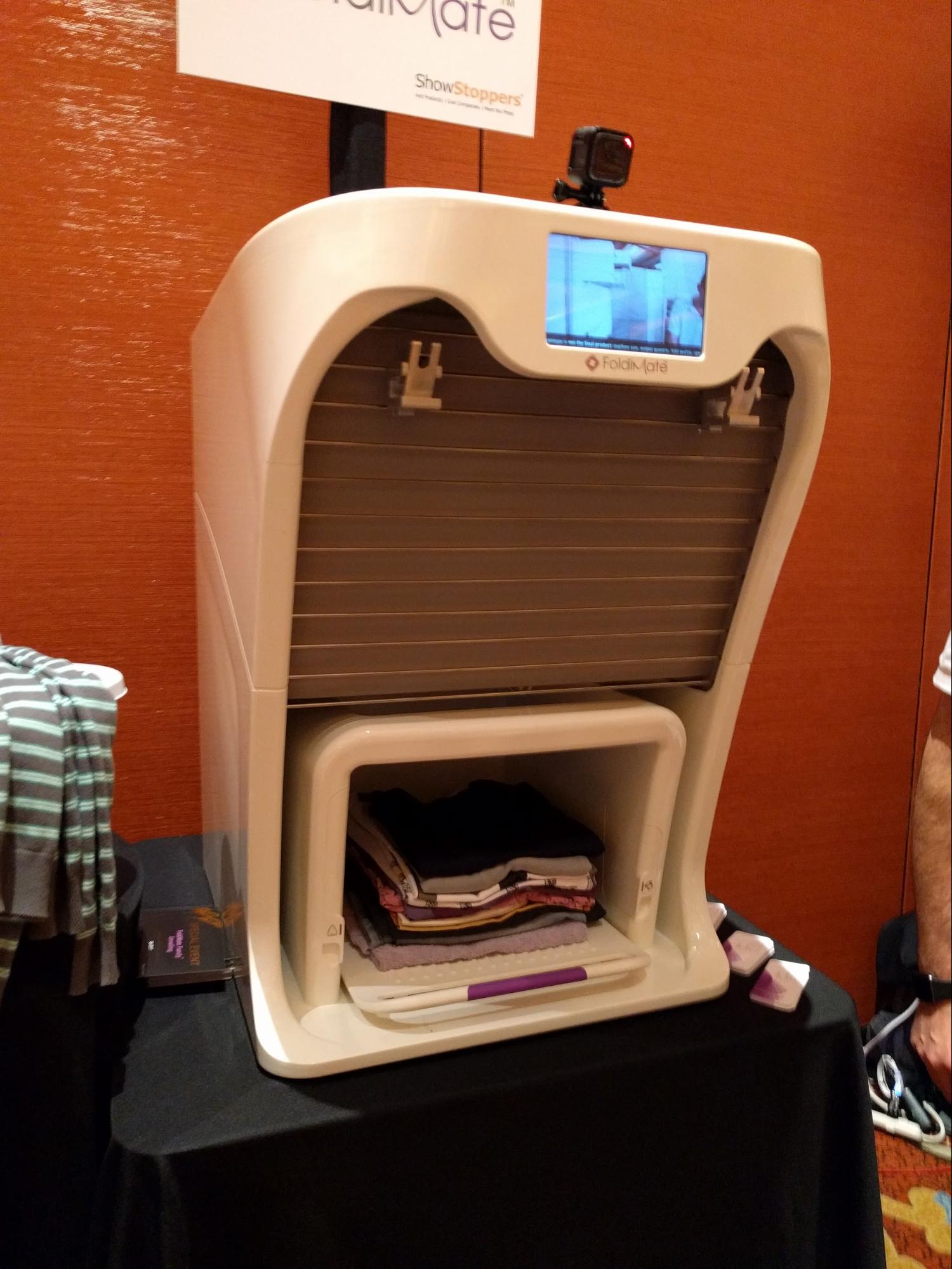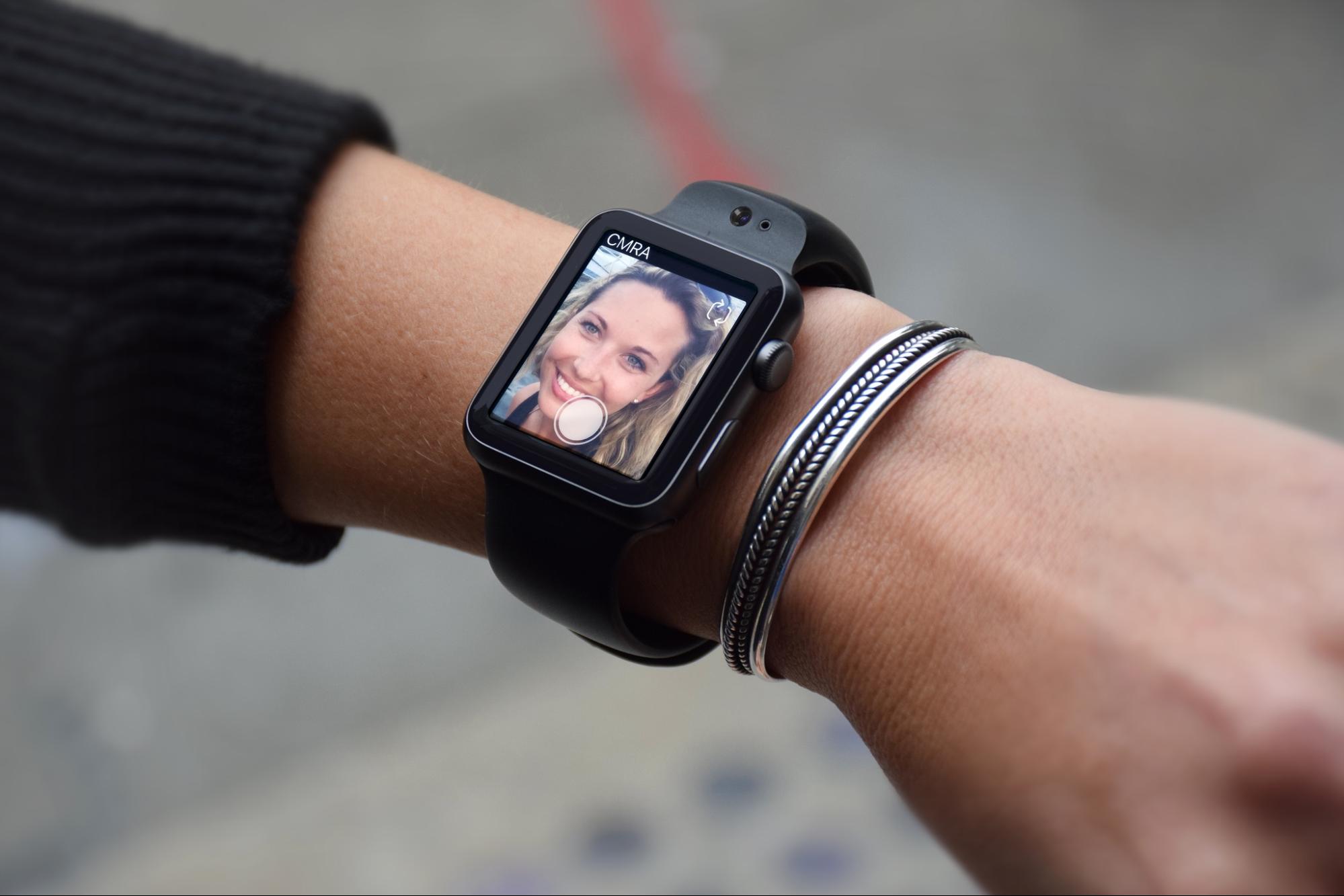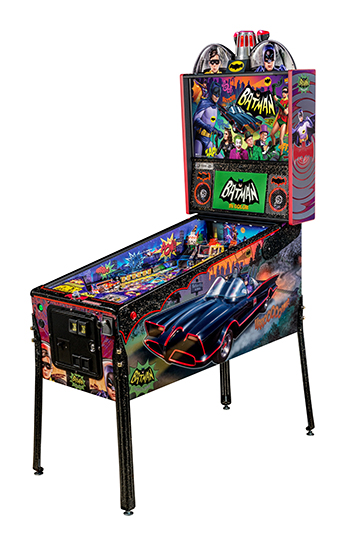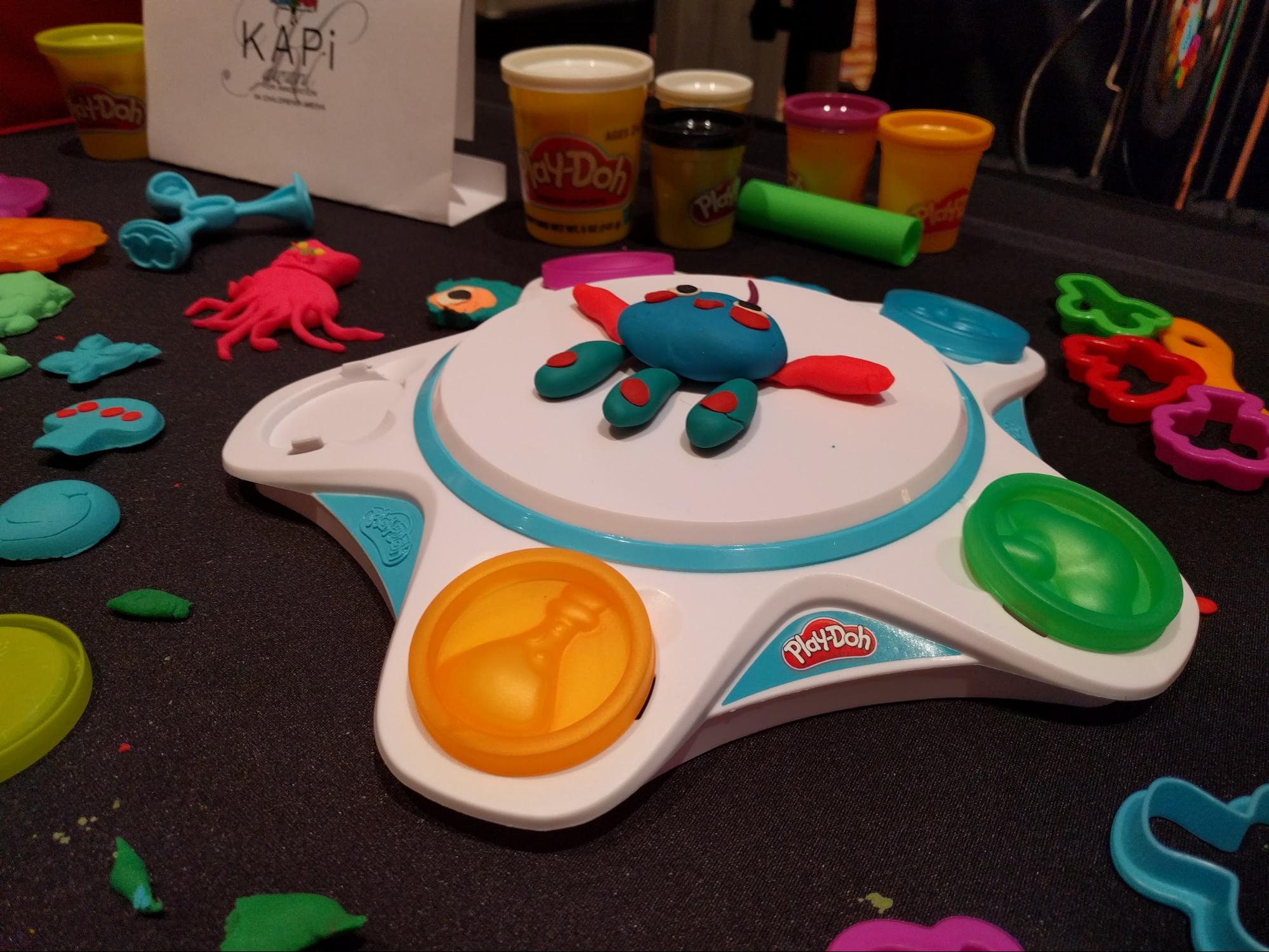TidBITS#1351/09-Jan-2017
All the big news this week comes from the CES show in Las Vegas, where our roaming gonzo reporter Jeff Porten scoured the show floors to find the best gizmos and gadgets for 2017. Also this week, Adam Engst wants to know how you use automation on the Mac. That’s because Apple has eliminated the position of Product Manager of Automation Technologies, and we want to let Apple know how important Mac automation is to you. We’ll compile your stories into a future article and forward it to Apple executives. Notable software releases this week include OmniFocus 2.8 and Default Folder X 5.1.2.
Tell Us Your Mac Automation Stories
The news that Apple had laid off Sal Soghoian, who has been a fixture in the world of scripting and automation for decades, hit hard at MacTech Conference back in November. Although Sal hasn’t been making as many public appearances as he used to in the days of Macworld Expo, his indefatigable efforts to promote user automation inside and outside Apple have had wide-ranging impact. Sal worked tirelessly within Apple to encourage support for AppleScript and Automator (among much else), and to ensure that Apple apps provided the necessary scripting dictionaries and Automator actions. He was long a champion for the user,
believing that users know best what they need to do and that automation technologies were essential for enabling users to create and streamline their own workflows.
What should we make of Sal leaving? Apple didn’t lay him off specifically, it instead eliminated the position of Product Manager of Automation Technologies. It’s my understanding that multiple groups within Apple wanted to hire Sal afterward, but Apple was under some sort of hiring freeze that prevented him from migrating within the company. So it doesn’t look as though Apple was trying to get rid of Sal personally, which is good. What’s less good is that it would appear that Apple doesn’t see the need for having a position that evangelizes user automation.
A 9to5Mac reader sent email to Craig Federighi, Apple’s Senior Vice President of Software Engineering, to ask that Apple not kill AppleScript and Automator, and was told “We have every intent to continue our support for the great automation technologies in macOS!”
Federighi’s response prompts the question of whether Apple’s future actions will bear out his statement. It may be overreaching to read too much into his precise words, but “intent” is an aim or a plan, not a guarantee. And “support” can mean “maintenance mode” rather than “advancing the state of the art.” Regardless, eliminating Sal’s position isn’t a step in the right direction. Sure, Apple could have plans to replace AppleScript and Automator with super secret magic unicorn technologies, but based purely on what the company has done and said, it’s hard to believe that.
It wasn’t always like this. The reason AppleScript survived the purge of products and technologies after Steve Jobs returned was that Jobs understood the importance of automation to key Apple markets, like publishing, finance, and TV and film, not to mention the enterprise and IT worlds. These industries live and die by custom workflows based on AppleScript and other automation technologies built deep into macOS.
Jobs personally approved the inclusion of Automator in OS X, and he enabled and supported adding AppleScript as a development language to Xcode. And it was because of his support that Apple’s automation team went on to develop AppleScript/Objective-C, script libraries, and JavaScript for Automation.
But the Apple of today is an entirely different company, focusing as it does on the iPhone and iOS. Even so, it’s obvious to anyone who uses iOS that there is still an important role for automation. I can tell Siri to “Change ‘Floating’ to 8 AM” to adjust the time of my wake-up alarm, but I have no way to automate the five taps necessary to play the audiobook we listen to every night in the Hoopla digital library app. Five wasted taps every night isn’t the end of the world, but if you can’t automate the little stuff, you certainly can’t automate the big stuff.
If Apple’s seeming indifference toward automation worries you because you rely on scripts, macros, workflows, and more to get your work done quickly, effectively, and accurately, here’s what I’d like you to do. Leave a comment on this article outlining how you depend on Mac automation tools in your job. If there are too many examples to fit in a single comment, just focus on those that are the most important to you. I’ll compile all the comments and publish them as a future article, and I’ll also send a copy to Craig Federighi and Apple CEO Tim Cook so they see concrete examples of why we need these automation technologies to continue to evolve.
To kick things off, here’s my most important bit of automation. When it comes time to publish a new or updated Take Control title, I start with three versions of the book: a PDF, an EPUB, and Mobipocket file. A copy of each must be stored in several locations on our internal file server and uploaded both to our Web server and to Amazon S3. Plus, the uploaded versions must be renamed precisely according to an algorithm that’s replicated on our server, so the site can update itself and serve the correct files based on the presence of properly named uploads in the right directories. When I used to do this by hand, it took 15–20 minutes, and I ran the risk of renaming a file incorrectly or uploading to the wrong directory. (And making
a mistake meant that I had to spend even more time figuring out what I’d done wrong and fixing it.) Now that I have a series of Automator workflows performing these tasks for me, it takes me just seconds to initiate the uploads, and there are never any errors.
So that’s my automation story — tell us yours!
CES 2017: Tech Trends to Watch
This year’s CES began with two unwelcome realizations: 1) the USB-C connector on my Nexus 5X phone is considerably grippier to the cable than to its internal connections, and 2) my middle-aged tuchus apparently exerts a more considerable lateral force on both than I realized.
So I find myself at the world’s largest tech show, where everyone is promising “futuristic” and “ubiquitous,” and I’m deprived of a smartphone for 48 hours. (A new one is on its way; there’s something to be said for $250 base prices.) It’s mundane to note how central a smartphone is to modern life, but that doesn’t change how devastating it is to be without one: it’s how I know where I’m going, how I get there, what I do along the way, and (when I’m working) a substantial part of what I do when I arrive. Instead, for at least two days, I’m going to be more reliant on a paper pad and pencil than I have since 1999. (And here I’ll pour one out for my beloved Palm
VII and Sony Ericsson P800.)
In any case, welcome back to CES (formerly the Consumer Electronics Show), the annual Las Vegas bacchanal of approximately 165,000 attendees, thousands of exhibitors, and around 20,000 newly announced gadgets, gizmos, and networks that aim to be your next “so important I’d be lost without it” technology. I’ve received press releases on gear ranging from smart spoons and trashcans to infrared iPhone cameras and artificially intelligent telescopes, and I’ll be writing about the slice of newsworthy technology that I’m able to see, because everything here happens in dozens of venues simultaneously spread out over the entire city.
I’ll also try to convey what it’s like to be here. CES is a closed show for industry and press, and while it’s exciting, more of my colleagues on Twitter seem to be expressing joy that they’re not coming than looking forward to working the show. It’s fun but also akin to surfing during a hurricane. CES is the kind of event where, when I took a break, I was thankful for the relative peace and quiet of a casino. This is the 50th anniversary CES, covering 2.6 million square feet of convention space; the Consumer Technology Association, which runs the show, estimates that CES will be covered by 1000 more journalists than attended the Olympics.
I kicked off the show with a presentation by CTA’s chief economist, Shawn DuBravac, who spoke about consumer technology trends in 2017. The first of these is the increasing adoption of voice technologies as a user interface for electronics. DuBravac discussed the switch to the GUI interface in the 1980s, then the use of smartphones in the past decade, and said that voice interaction removes the need for the screens that these earlier technologies required. Each of these interface approaches is, in its way, redundant; anyone who has worked with Terminal knows you can do nearly everything from the command line. But taking excess CPU horsepower and using it for a GUI made for a transformative experience. Likewise, you interact
differently with technology when you’re talking with it, even if that conversation is an “unnecessary” additional way of doing things.
Voice recognition has made massive improvements in the past 20 years. In 1995, 100 percent of all input resulted in voice recognition errors, but today, technology is about as good as humans are at understanding what you say. (People have trouble recognizing what’s said about 5 percent of the time, apparently, so maybe you’re being unfair to Siri.)
Voice interaction is the emerging interface for robots and other technology similar to Amazon’s Alexa or Google Home. DuBravac called this a new era of “faceless computing,” where you can get things done while looking at other things; color me skeptical about whether it’s better. Yes, Alexa can call you an Uber, but I like having my phone show me that the driver is picking me up in front of my house, instead of the back alley that Uber keeps sending them to. That said, for casual interactions, voice is excellent. Look for new capabilities to make this better, such as services that can tell who is speaking based
on their voiceprint, allowing for things like customized search results and parental control of their kids’ interactions.
DuBravac’s next trend is the infusion of artificial intelligence into a wider range of applications. The falling price of both chips and software allows for reasonable intelligence to be installed in just about anything, although I think there’s too much hype around both the terms AI and “smart,” which can apply to nearly anything. Is a refrigerator with sensors and a computer chip “smart” or “artificially intelligent?” No… but on the other hand, it might take care of small chores that no human would bother to do, like micro-adjusting its temperature to best suit the foods it’s storing.
Likewise, it’s a bit hard to tell when a new device is usefully smart, or when it’s taking “smart” a step too far. For example, it would be trivial for a washing machine to count the number of loads it has done, keep track of how much detergent you have left, and automatically order a refill when you need it. Alternatively, you can buy an Amazon Dash button and push it when you need more Tide. Or you could just remember to buy detergent. DuBravac suggested that in the future, maybe 40 to 50 percent of all of our household purchases could be made by designated agents like smart washers.
I have no issues with removing minor annoyances from my life, but it seems a bit Brave New World to me if my appliances do my shopping without any interaction on my part. Perhaps I want to change detergent brands, or some friends gave me an extra bottle when they moved, so I’m not out when the washer thinks I am.
Beyond that, I note that this futuristic vision requires an affluent lifestyle that reliably remains affluent. I doubt the average person living paycheck to paycheck would be well served by having so many automatic deductions from their bank accounts, and woe to the laid-off person who suddenly needs to remember to cancel a hundred different automatic orders.
This leads us to the smart home, part of DuBravac’s next trend, that of widely connected everything-to-everything. He compared smart homes to the adoption of the dishwasher, which was invented in 1893(!), but took until the 1980s to make its way into half of U.S. homes (penetration is around 80–85 percent today). The jump in adoption didn’t happen until the necessary infrastructure was adopted after World War II: indoor plumbing, electrification, and the standardization of kitchen countertop heights.
DuBravac sees ubiquitous Wi-Fi and cellular broadband as the standardized countertop of the smart home; it’s the prerequisite that allows the smart home to be built up piecemeal, from many competing vendors, as opposed to the whole-house model that made little headway in the market previously. Smart home gadgetry will be a global $25 billion market this year, with $3.5 billion of that in the United States. On the downside, market competition that allows on-the-fly adoption also makes for competing standards, which slows mass market adoption.
Rounding out DuBravac’s home connectivity trend will be wearables that enable your house to monitor you. Whether it’s biometric feedback designed to improve your health or interactive environment sensing that lets your home know whether you’re there and where you are, technology you carry on your person will integrate you into a data set about your home, which will let your home be responsive to your needs and expectations.
The path to making smart things smarter comes from the interconnected nature of many of these devices; when one device senses an error condition or learns something new, it can improve the responsiveness of all other devices in its class. That’s how self-driving cars went from an 11-minute failure in 2004 to millions of test miles successfully driven on the roads today. This kind of aggregation puts many devices on an exponential learning curve, enabling rapid development from beta testing to seriously road-tested.
Of course, it’s one thing to predict overall trends; it’s another to see how 2017’s devices are living up to these models. And that’s one thing I’ll be sure to look for in the demos at CES.
CES 2017: Cool Products from CES Unveiled
CES kicks off with two days dedicated to press events. The show floor opens on Thursday, but Tuesday and Wednesday are media days, with breakout show floors for a “select” group of exhibitors willing to pay a lot of extra money to be at these additional shows, where the media are wined and dined with open bars and awesome hors d’oeuvres.
In contrast, from Thursday through Sunday, we in the media trudge across 2.6 million square feet of show floor, waiting in line with 100,000 other people for $8 hot dogs and overpriced Starbucks.
So news from CES “opening” is really from CES Unveiled, the early breakout event run as part of CES itself. I’ll be attending two similar events run by other organizations, and I’m separating out my coverage of these events so you know who’s getting attention because they paid extra to be at one of these press shindigs, and who’s catching my attention on the show floor. (To be fair, the primary reason I attend these media events is that they’re good for generating stories, despite the hype.)
Sevenhugs Smart Remote — It could be the one remote to rule them all. Looking like the love child of your TV remote and an iPhone, the magic of the Smart Remote is that it figures out what device you’re pointing it at, and automatically shows you the proper controls for that device. You can program it to assign certain tasks to objects, so pointing it at the door can call you an Uber, or you can use the fireplace as the target when you want to control the thermostat. Currently on Indiegogo for $229 with an estimated ship date
of August 2017; pre-orders are also being taken on the Sevenhugs Web site for the same price. It will retail for $299. They had a working model on the show floor.
Dring Smartcane — Need help getting around and worried about falling? Dring’s Smartcane is a walking stick with a button that calls for help, a GPS so your family knows where you are, and fall detection. I don’t know if that qualifies it as “smart,” but it could be useful for some people. Pricing isn’t set, but will reportedly be “less than $100” and “less than $10 per month” for service. It’s due in Europe in September 2017, and in the U.S. sometime later. Perhaps it will also conceal a rapier.
Moen U — The Moen U wins the prize for “I thought of this three days ago and wondered why it doesn’t exist yet.” While I was fiddling with my home shower to get a non-scalding, non-freezing temperature, I wondered why we put up with such crude controls in the 21st century. Voila! The Moen U has a digital setting, and you can set the temperature in the shower or from your iPhone (best done before you get in). Like so much else at CES, it’s “coming soon.” Since I rent my home, I had no idea that regular people can just buy showers, so I neglected to ask about pricing initially. I later learned that the 2-outlet shower costs $1160 and the 4-outlet shower is
$2200. There’ll be more information upon release at Moen’s Web site, which has an introductory video in the meantime. And if there’s any Internet of Things device that needs good security, it’s clearly this one — no one wants their shower hacked (brr!) or their hygiene habits publicized.
Motiv Ring — Motiv caught my eye with the first story for why a wearable that isn’t a watch might be useful: sleep tracking. Wearing my Pebble at night to track my sleep is annoying; this waterproof titanium ring seems much less obtrusive. It also offers the standard array of fitness tracking metrics: heart rate, distance, steps, and caloric estimates; it syncs to a free app for the iPhone. It’s available for $199 as a pre-order from Motiv, with shipping in “spring” (that’s in the northern hemisphere, as with other seasonal ship dates I’ll mention throughout these CES articles).
Arovia SPUD — The Spontaneous Pop-Up Display is exactly what it says on the tin: a 24-inch monitor that collapses to the size of a really thick paperback book and weighs less than 2 pounds (1 kg). Fully expanded, it’s reminiscent of the shape of a Bondi blue iMac. Screen quality was not perfect; the screen display isn’t quite flat and balloons out at the edges a bit. But if you’re the type who wants to take a big external monitor on the road, it could work for you. It’s $399 from the company’s Indiegogo campaign and is promised for August 2017. Here’s a video demo.
Mohu’s Untangle.tv — Untangle.tv is a Web app that polls you for your location and current TV budget, asks you about your viewing habits, and then gives you a plan for cutting the cord. Mohu sells over-the-air indoor antennas, so expect the possibility of upsell (its coming-in-April-2017 Airwave antenna, $150, will share broadcast TV to your Apple TV or iOS device), but if you’re looking to reduce your cable bill, Untangle.tv might be a good site to check out.
Giroptic iO — If you find front and back cameras too limiting, Giroptic can help you out with its 360-degree iO camera, which snaps into a Lightning port and works with most recent iOS devices. Take photos, record movies, or broadcast live Facebook 360 movies with the included app. $249 on Giroptic’s Web site, where it appears to be currently shipping.
TrackR pixel, wallet, and atlas — I believe Bluetooth tracking devices will be a big deal when the price goes low enough to make them ubiquitous. In the meantime, the currently available TrackR bravo isn’t super cheap at $30, but it’s the size of a quarter and will locate itself (and whatever you attach it to) on an iPhone app. The TrackR family will grow in 2017 with the addition of the smaller TrackR pixel ($25, spring), the credit-card sized TrackR wallet ($30, summer), and TrackR atlas (spring, $40 and up), an app and wall plug that lets you map your house so the TrackR
locations show up in relation to everything else. If only the company would make a tracker small and cheap enough to attach to reading glasses! All TrackR devices share their locations with each other, so if you’ve lost something that’s out of your Bluetooth range in an urban area, you’ll be able to find it if other TrackR devices are nearby.
FinSIX DART — If you have a MacBook or MacBook Pro with USB-C or Thunderbolt 3 ports, and you’re looking to cut down on your carry weight, check out the DART, a 65-watt laptop charger that’s closer in size to a cell phone charger than an Apple adapter and will be adding USB-C this month. It costs $99.
Cosmo Connected — Are you a motorcyclist? Cosmo Connected is a brake light that attaches magnetically to the back of your helmet, putting a brake light at eye level for other drivers. And if you’re in a crash, it notifies authorities of your GPS coordinates within 3 minutes. The press release also mentions using it on regular bikes, but it’s unclear whether that involves a different device or a software upgrade to the current one. Available in May 2017 for $99.
Pico PicoBrew — I know little about beer and rarely drink, but even I’m impressed by this gadget, which I’m sure was elevator-pitched as “Keurig for beer.” $799 gets you a PicoBrew, a five-liter brewing keg, and a five-liter dispensing keg. Add in a brew pack (sold in hundreds of varieties, which you can customize), brew the beer, wait a week or so for fermentation, then transfer to the second keg and drink. I have no idea how economical this works out to be versus your local microbrew, but it sounds a heck of a lot easier than any other homebrewing I’ve heard about.
Immotor Go — The original Segway didn’t set the world on fire, but I’m impressed by the finer touches of the much smaller and less obtrusive Immotor Go. In one mode, it’s a scooter with a maximum range of 20 miles at a top speed of 20 miles per hour, but it can also automatically match the pace of other pedestrian traffic around you. In another mode, it can follow you on autopilot carrying your bags, or you can steer it with your phone. It folds up to something that’s small enough to carry and about the weight of a Kaypro II laptop (27
pounds, in other words). And it has hot-swappable batteries, so you can purchase additional batteries and chargers and keep a set at both ends of a commute. I’m unexcited about the possibilities for the executives and hipsters they show in their marketing materials, but for someone with limited mobility, it could be a game changer. Look for it in March 2017 for $1500.
Stringify — Finally, although I haven’t had a chance to check it out yet, Stringify sounds to me like the Internet automation service IFTTT on steroids (and if you’re not sure what IFTTT does, see “IFTTT Automates the Internet Now, but What Comes Next?,” 20 December 2013). IFTTT allows for one condition and one event; Stringify has multiple conditions and creates “macros” for the real world, like “if it’s after 7 PM, my motion sensor outside is tripped, and I’m not home, turn on my lights and send me a text.” Better yet, Stringify integrates with IFTTT so one can
trigger the other and vice versa. Just as with IFTTT, I’m unclear on how Stringify plans to make money.
CES 2017: Gizmos from the PEPCOM Digital Experience
I’m continuing to seek out the most interesting products from CES to share with you, and those mentioned in this article come from the PEPCOM Digital Experience, the second of three media-focused events. You’ll see a few ? icons in the entries below to indicate that I was given something of value by the exhibitor, usually the item I’m describing. I won’t mention every T-shirt, but I think it’s important to note if I’m walking away with anything substantial.
Anker PowerCore II 20000 — Anker’s new PowerCore II 20000 external battery ? is worth noting because instead of a single power input, you can charge it with two micro-USB inputs from dual wall sockets simultaneously, enabling you to charge the battery twice as fast. It sports a 20,000 mAh battery that’s reportedly good for seven iPhone 7 charges, but it’s not especially Mac or iPhone specific, with three USB-A ports and Qualcomm QuickCharge technology that’s wasted on iPhones. Anker does include, though, smart sensing technology that charges any device at the fastest possible speed. It’s available now for
$44 from Amazon.
Decibullz Bluetooth Headset — I’ve seen a few headsets with custom-molded earpieces here, but Decibullz ? is notable for being available now and for its current sale price point of $39 for a wired headset and $119 for Bluetooth wireless. Heat up the removable eartips in a cup of hot water and then place them in your ears while they’re still warm; they’ll mold to make a tight fit. If you need to redo the fit, just repeat with another cup of eartip tea. I was a bit underwhelmed by their loudness during a test run, but I was in a loud environment and I need to re-mold the eartips again.
Cotral InspEar Active Earbuds — The InspEar earbuds sit at the other end of the spectrum from the Decibullz headset. To give you complete control over your sound environment, InspEar promises to connect to multiple devices simultaneously and provide noise reduction, physical 30 dB sound protection, and internal microphones. Bring up ambient sound and lower background noise, or use them with any particular device you’ve synced to them, and control it all with internal voice recognition to switch between modes. These pricey earbuds are set to cost $700 and won’t be available until late 2017. You’ll have to watch for more news — Cotral doesn’t currently provide any more information on its Web site.
Sen.se Peanut Sensor Tags — Sen.se has been at the show before with their cute Peanut ? Bluetooth tags, each of which has different capabilities. I was given a Guard Peanut, which attaches to any item you care about and lets you know if it’s moved, with both an audible alarm and a notification to your phone. The upcoming Med Peanut attaches to a pill bottle and senses when meds have been taken (or missed), creating a compliance record that you can review on your phone and automatically share with your doctor. Both cost $29; the Guard is available now, and the Med is due in April 2017.
Griffin Reserve — Griffin’s Reserve iPhone 7 case may not be notable for its 3000 mAh battery, but you might like that it includes a 3.5mm headphone jack. In case you’ve been missing one. Look for it in the second quarter of 2017 for $99.
LaCie Thunderbolt 3 Drives — Seagate’s LaCie brand has expanded its line of external hard drives with Thunderbolt 3 ports for the new MacBook Pro, along with a bump in maximum sizes. The portable LaCie Rugged line has hard drives available from 1 TB to 5 TB, starting at $250, and SSDs in either 500 GB or 1 TB, starting at $430. The desktop LaCie d2 line ranges from 6 TB to 10 TB and is priced starting at $430. They should be out later this month.
ThinOPTICS — If you regularly find yourself having trouble deciphering a menu because you forgot your reading glasses, you might be intrigued by the tiny folding size of ThinOPTICS reading glasses ?. They achieve their small size by eschewing earpieces; you wear them by attaching them to your nose. An unbreakable rubber bridge between the lenses doubles as the nose clamp. The bridge is also where the glasses bend when you put them into either a keychain case or a “pod” designed to be attached to the back of your phone case. They’re available now from ThinOPTICS or Amazon for $20–$30 in various strengths.
NeoNode AirBar — Apple says we don’t need a touchscreen on a Mac laptop, but if you’ve found yourself trying to tap your MacBook Air’s screen to dismiss a dialog or the like, you’ll have the chance to see if Apple is right or not. The jaw-dropping NeoNode AirBar connects to a 13-inch MacBook Air’s USB port and rests at the base of the screen where it meets the keyboard. Somehow, this turns the entire display into a touchscreen; NeoNode demoed a live MacBook Air accepting touch input and said there was no custom software on the Mac enabling it. Apparently it’s done by emulating custom mouse functionality. The AirBar is slated to ship in March 2017 for $99; you can pre-order now.
Ahkeo Freedom Bike — I like the concept of the Freedom Bike, which turns a stationary bicycle with rowing attachments into a human-powered generator. Various power and USB ports on the bike allow you to connect your gadgets to it directly or recharge the included battery for power afterwards. Ahkeo is working on making agreements whereby you can sell the power you generate back to the grid or donate its value to charity, although that will probably depend on where you live. Ahkeo isn’t sure whether it will produce the Freedom Bike itself or license the technology elsewhere, but it’s hoping for a release in six months;
the show floor had an early prototype.
Setapp — MacPaw’s Setapp service is going public in late January 2017, and Mac users might want to take notice. Promising to be a “Netflix for Mac apps,” a $10-per-month subscription fee gives you complete access to every app in the Setapp library, which will launch with 56 well-known Mac apps. Setapp is in private beta now — TidBITS Publisher Adam Engst has been testing it and will write more once it’s available. MacPaw is hoping for a virtuous cycle with Setapp: the more subscribers it gets, the more developers MacPaw can attract, leading to more apps in the library and enticing even more subscribers.
AmpMe for iOS and Android — Sometimes you see something that impresses you with its technical brilliance while leaving you wondering when it would be useful. Such is the case with the free AmpMe app for iPhone and Android, which simultaneously syncs an unlimited number of smartphones and their connected Bluetooth speakers through a proprietary database that calculates latency time across all these devices to make sure that whatever is playing syncs perfectly. So if you have a dozen friends with phones and individually mediocre Bluetooth portable players, you could use
AmpMe put together a pretty loud party or set up a synced music platform across multiple rooms. Or something like that.
HelloMind for iOS — I’m extremely skeptical of the many hardware and software releases at CES that promise to “train your brain” (frequently with some sort of electrically inductive headset), but HelloMind’s hypnotherapy app ? at least has the advantage of a free trial. Download the free app from the App Store, and you can try out the two included hypnotherapy sessions to see if you think it’s useful or poppycock. If it works for you, the app offers a menu of over 200 other in-app purchases promising to eliminate bad habits or reinforce good ones.
Pinn — I suspect the Pinn ? has a smallish target market, but it might be useful for some. The Pinn is essentially a clip-on accessory that lets you use your iPhone remotely when it’s otherwise inaccessible: buried in a handbag or backpack, or when you’re biking, running, or engaged in some other activity where phone use is unwise. Its LCD readout shows you notifications and incoming calls, a removable earbud allows you to take calls or listen to music one-handed, and a microphone allows for voice control back to your phone. Hmm, sounds a lot like an Apple Watch! The Pinn will be available in February 2017, and you can pre-order
one now for $99 to save $100 off the retail price of $199.
Notion.ai — In the category of “it demoed well, but I haven’t had time to try it” is the free Notion email client for iOS and Android, which does a deep dive into any Gmail, Office 365, or IMAP email account and provides sophisticated analytics about the conversations you’re in, as well as inductive guessing about which email messages you’re likely to care about. For example, it can highlight a conversation where you’re waiting for a reply or let you know that a particular person has historically replied to you within four hours. Whether it can live up to
its promise of making your inbox conquerable is another question, but I liked what I saw and will probably give it a spin.
Olloclip Lens Sets — If your iPhone camera doesn’t quite have the lens power you want, Olloclip released three different lens clip sets you can attach to an iPhone 7 or 7 Plus. The Core set includes a Fisheye, Super-Wide, and Macro lens; the Active set has a Telephoto and Ultra-Wide lens, and the Macro set has macro lenses in three different magnifications. Prices range from $80 to $120 and they’re available now. Olloclip was also showing the $50
Pivot, which houses your entire iPhone horizontally in a rotating grip with passive image stabilization.
CES 2017: From Laundry to Play-Doh at Showstoppers
My final media-only stop at CES 2017 is Showstoppers, the last of the exhibition halls where exhibitors have anted up more cash and we members of the press are fed and watered. But for you, dear readers, it’s all for a good cause, since Showstoppers featured some fascinating products. From here on in, I’ll be slogging through miles of corridors with 100,000 others, stopping frequently when the crowds need to gawk at something shiny. We’ll see if those stops will bear fruit or merely slow me down in my quest to find more neat gadgets for you; most of the time, crowds gather for innovations in exhibitor booth technology rather than what’s actually being demoed.
Foldimate — CES is famous for bizarre Jetsons technology. This year we have a laundry-folding robot: the Foldimate. Like the best Jetsons technology, it isn’t slated to ship for over a year (late 2018), it’s the size of the dryer, and it will cost between $700 and $850. And you can’t just dump a load of laundry on top and have it come out folded; instead, you put each item into a rack, and then the Foldimate can handle it. You have to really hate folding laundry to buy one of these. For the rest of us, just check out this guy’s video.
eBlocker — If you’ve gotten your head around the idea of blocking Web ads in your Mac or iPhone browser, how about doing it automatically for your entire home network? That’s the premise behind eBlocker, a Wi-Fi device that, when deployed on your network, employs deep voodoo to block ads and trackers for every other device there, without reconfiguring your base router. I know something about networking, and I have no idea how it accomplishes this feat. It’s priced at $219 for the currently available eBlocker Pro version, with a $59-per-year subscription after the first year to keep its database of sites to filter
up-to-date. If you want more control, eBlocker Family will let you create 10 different profiles of sites to allow and block for the various individuals on your network — due in February 2017, it will retail for $249 and cost $99 per year for the subscription.
Coros Linx Bone Conduction Bike Helmet — Riding a bike with your earbuds in so you can’t hear overtaking vehicles qualifies as one of the stupider things you can do. Coros has a solution with the Bluetooth-enabled Linx helmet that leaves your ears clear and communicates sound to you through your jawbone. A microphone allows for a phone conversation and is shielded from the wind by being placed near your forehead. Finally, you can control your phone with a remote you can mount on your handlebars. It’s available now for $200, and my editors tell me that the fact that it got a positive review from DC Rainmaker means that it’s pretty good.
Cherry MX Board Silent — There’s a type of keyboard connoisseur who despises the keys in the new MacBooks and misses the touch feel of the Apple Extended Keyboard. Cherry has been making keyboards for these people for a while, but those clacky keys make a lot of noise. For folks who don’t want to become the pariah of their offices, Cherry has introduced the MX Board Silent, which takes away the noise. It will be available later this month for $149. Cherry’s Web site says it’s available only in an “international EU configuration,”
but aside from the € symbol added to the 5 key (in addition to the %), I can’t tell the difference from a U.S. layout.
Glide CMRA Band for the Apple Watch — The Apple Watch may have finally brought us Dick Tracy’s two-way wrist radio, but this is the 21st century… what about video calls? That’s one of the features of Glide’s CMRA, which replaces an Apple Watch band with one that has both a front-facing and forward-facing camera. Glide has released a software development kit for these cameras, so additional functionality can be built into other video apps, alongside what the CMRA’s own software can do. The charging stand does double duty, charging both the CMRA band and the Apple Watch. It’s due in “Spring” for $249, but you can pre-order
for $169 until 9 January 2017.
Cameras on Your Glasses: PogoCam and SunnyCam — If lifting your wrist seems like too much effort, how about a camera that attaches to your eyeglasses? PogoTec’s PogoCam connects magnetically to the earpiece of special prescription glasses or sunglasses; PogoTec is working with several manufacturers to make lines of eyewear that can hold the PogoCam but look stylish regardless. Don’t expect to film all day; PogoCam’s capacity is 100 photos or 2 minutes of 720p video. It’s due in Spring 2017 for $149. For athletes, 2 minutes of video is nothing, so check out SunnyCam’s Activ, Sport,
and Xtreme sunglasses, which embed a video camera in the nosepiece of well-designed sunglasses. They can record over 11 hours of video, albeit with recharging, since they can only record for 1 hour at a time. SunnyCam’s glasses range from £120 to £150 and are available now, at least in the UK.
ZVOX Accuvoice — I often watch TV with closed captions turned on because a fair amount of the time I can’t make out what’s being said well enough. If you’re in the same boat, you might want to try a ZVOX AccuVoice, a speaker bar for your TV that uses hearing aid technology to enhance the frequencies of dialog, so they can be heard clearly even when the overall volume is set low. It’s available now for $250.
Yubico YubiKey 4, 4 Nano, and 4C — Two-factor authentication is becoming an increasingly necessary method of ensuring your accounts can’t be compromised with a cracked or guessed password. (If you’re unclear on what two-factor authentication is, Joe Kissell explains it well in “Take Control of Your Passwords.”) Yubico’s ? various YubiKey USB products store cryptographic keys that can be used as one of your two factors, after some setup with the various services you use. In general, use of a YubiKey changes an account from “anyone with a
password can use it” to “only people who have approved keys can log in.”
YubiKey seems to have done everything it could to make two-factor authentication as easy as possible, but that’s still nowhere near simple. I’ve spent twenty minutes reading the YubiKey documentation trying to summarize the service, and even though I understand the concepts, I don’t feel like I grasp the company’s implementation, and I wouldn’t recommend its products to someone who didn’t have some technical knowledge. Beyond that, there’s avoiding the “losing your factor” problem (see Glenn Fleishman’s “Dancing the Two-Step: Coping with the Loss of a Second Factor,” 28 August 2013), and the short answer appears to be this: You don’t buy one YubiKey, you buy two
or three and hide the extras safely. YubiKey’s USB options are the stick-like 4 ($40), the tiny 4 Nano ($50) which seats nearly flush and is designed to be left in the port, and the upcoming 4C ($50) for USB-C ports (due in February 2017). One important limitation to keep in mind is that for Web logins, YubiKey doesn’t support Safari.
Stern Pinball — When I was a kid, I knew that when I grew up, I’d have a basement filled with classic pinball machines (and not knowing that owners had free-play buttons, I also envisioned a large bucket of quarters). Now it’s 2017, and I’m just glad that Stern is still making the darn things after the rest of the industry collapsed. If you want to live up to my childhood dreams, there’s the new Batman ’66 game available starting at $8599, but for less expensive and more mobile pinball play, try the free Stern Pinball
Arcade for iOS (it’s also available for other platforms, like PlayStation 4), which features two free playtables a month, and lets you get about a dozen others as in-app purchases.
Seed-Up Moore “Infinite” USB Stick — Seed-Up pitches an impossibility: a USB flash drive with an “infinite” amount of storage, even when it’s offline. In fact, the Moore stick is a 64 GB USB flash drive with onboard AI tasked with figuring out what you’re going to need and when. In theory, it uploads anything you’re not using to Backblaze storage and downloads anything you’re going to need. It currently works with Macs, and Seed-Up plans to release an iOS app as well because the hardware already works with the USB-to-Lightning adapters the company has tested. It’s due in July 2017 for between $40 and $70,
which includes a six-month subscription to unlimited Backblaze storage, with pricing of “less than $9” per month after that. Obviously, how well it works will depend on the quality of that AI. I’m curious to know if I’ll see “∞ GB available” in the Finder.
GeniCan — I would have thought that a smart trashcan that helps you buy more of things you’ve used up would be as silly as a laundry-folding robot, but GeniCan’s demo (watch it on their site) impressed me out of my jaded predispositions. GeniCan is a barcode scanner that clamps to the side of a standard trash can, and you use it to scan packages as you’re tossing them in the garbage or recycling — it automatically adds the scanned product to your shopping list. If there’s no barcode to scan, GeniCan asks you what you’re throwing out and uses voice recognition to add it to your list. So, if you’ve just finished a roll of
paper towels, just hold the cardboard tube in front of the scanner and say “paper towels.” Items you scan get added to a shopping list app that runs on iOS or Android devices, and you can optionally set them for automatic ordering from Amazon. It will ship in March 2017 for $149; you can save $25 by pre-ordering.
Play-Doh Touch Shape to Life Studio — This product is not new, having been in some Apple Stores for two months already, but I was astounded by Play-Doh’s Touch Shape to Life Studio, which is functionally a 3D scanner designed for a 5-year-old. Mold a Play-Doh creature and put it on the studio pad, take a picture of it with an iPad, and the thing comes to life in a 3D environment on the iPad, where it cavorts with the other creatures you’ve already scanned. Considering the dozens of 3D scanners I’ve seen that require an engineering degree to
comprehend, I was blown away by the ease of use. It’s only $40 at a retail Apple Store or from Apple’s Web site.
TidBITS Watchlist: Notable Software Updates for 9 January 2017
OmniFocus 2.8 — The Omni Group has released OmniFocus 2.8 with the addition of one of its most requested features — Global Search. Instead of being limited to searching just the current view (the basic search behavior of OmniFocus since 2014), you can click a magnifying glass icon in the search field to expand the search scope to Here, Remaining, or Everything.
The task management app also improves support for tabbed windows in macOS 10.12 Sierra, requires you to enter your sync password before migrating to the encrypted file format, adds an Export button that copies selected attachments to a directory of your choice, fixes an issue where group parents couldn’t be completed if a sync completed their children, resolves a crash that occurred when customizing the toolbar after editing a Perspective name, and updates localizations. ($39.99 new for Standard and $79.99 for Pro from the Omni Group Web site, $39.99 for Standard from Mac App Store (with in-app purchase option to upgrade to Pro), 28.9 MB, release notes, 10.10+)
Read/post comments about OmniFocus 2.8.
Default Folder X 5.1.2 — St. Clair Software has released Default Folder X 5.1.2 to correct several bugs in the Open/Save dialog enhancement utility. The update fixes a bug that could cause the app to use more memory than it should, eliminates a crash that occurred when performing an operation (Duplicate, Move, Copy, etc.) on a broken alias, and turns off HockeyApp metrics reporting. ($34.95 new, $14.95 upgrade from version 4, TidBITS members save $10 on new copies and $5 on upgrades, 8.2 MB, release notes, 10.10+)
Read/post comments about Default Folder X 5.1.2.
